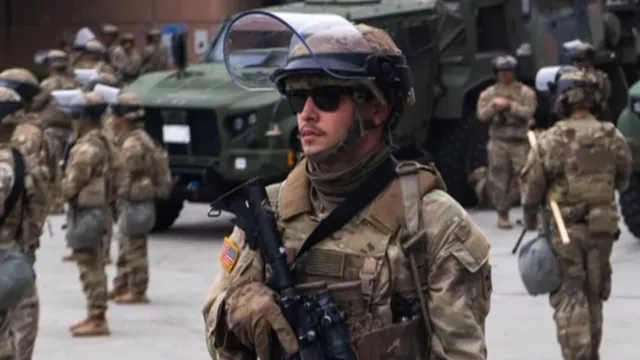
Military commander requests troops shift back to wildfire duty amidst protests
2025-06-30 22:33- General Gregory Guillot proposed to reassign 200 National Guard troops from protest duty in Los Angeles to wildfire fighting duty.
- This deployment raised legal concerns and objections from California Governor Gavin Newsom, who claimed it hindered wildfire preparations.
- The reassignment reflects the urgent need for firefighting resources as California approached its peak wildfire season.
Express your sentiment!
Insights
In early June 2025, President Donald Trump initiated a controversial deployment of approximately 4,000 California National Guard troops and 800 active duty Marines to respond to protests in Los Angeles against Immigration and Customs Enforcement raids. The decision came against the wishes of California Governor Gavin Newsom, who argued the deployment was illegal and could hinder the state's ability to combat wildfires, especially as California entered peak wildfire season. As wildfires become a pressing issue in California, the National Guard's involvement becomes critical for effective fire response.
Contexts
The California National Guard plays a vital role in wildfire management, particularly in a state that faces severe wildfire threats due to its diverse climate and vast wilderness areas. As wildfires become increasingly frequent and intense, primarily due to climate change and other environmental factors, the California National Guard's involvement has become an essential component of the state's emergency response framework. Their extensive training and resources allow them to support local agencies effectively, helping to mitigate the impacts of wildfires on communities, ecosystems, and infrastructure across the region. Through coordinated efforts with Cal Fire and other state agencies, the California National Guard assists in various aspects of wildfire management, including firefighting, logistical support, and post-fire recovery operations. One of the key responsibilities of the California National Guard in wildfire management is the deployment of specialized units trained in firefighting techniques. These units are often mobilized during peak wildfire seasons, providing immediate boots on the ground to assist in the suppression of active fires. They bring with them essential skills, equipment, and personnel to enhance the firefighting capabilities of local and state fire agencies. This includes conducting controlled burns to reduce fuel loads and prevent the spread of wildfires, as well as performing search and rescue operations in affected areas. The Guard's swift response and ability to operate in challenging conditions are pivotal to protecting lives, property, and the environment. In addition to direct firefighting efforts, the California National Guard contributes significantly to logistical and support operations during wildfire incidents. They assist with the transportation of equipment and supplies to remote firefighting locations, ensuring that firefighters have the resources needed to combat wildfires effectively. Furthermore, the National Guard plays a critical role in establishing and maintaining communication channels between various agencies involved in wildfire management. This coordination is essential for efficient strategy execution and ensuring that all responders are informed of current conditions and necessary actions. As California continues to face the growing challenges posed by wildfires, the role of the National Guard in wildfire management is expected to expand. Their experience and operational readiness position them as a critical resource in the fight against these destructive events. Ongoing training, preparedness programs, and collaboration with other agencies are vital to enhancing the National Guard's effectiveness in wildfire scenarios. By integrating military expertise with civilian firefighting efforts, California can better equip itself to manage the increasing threat of wildfires, safeguard its communities, and protect its natural resources.